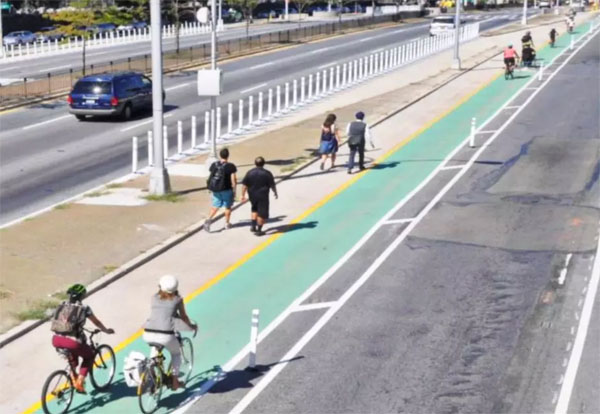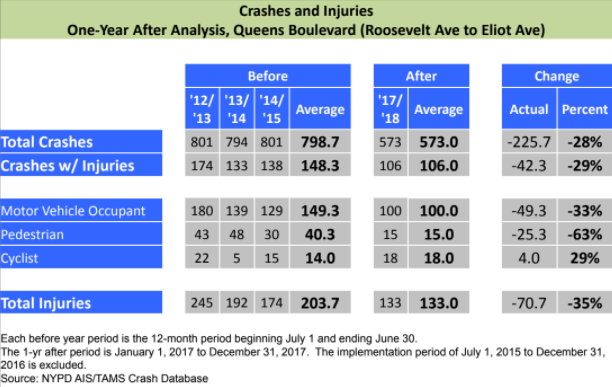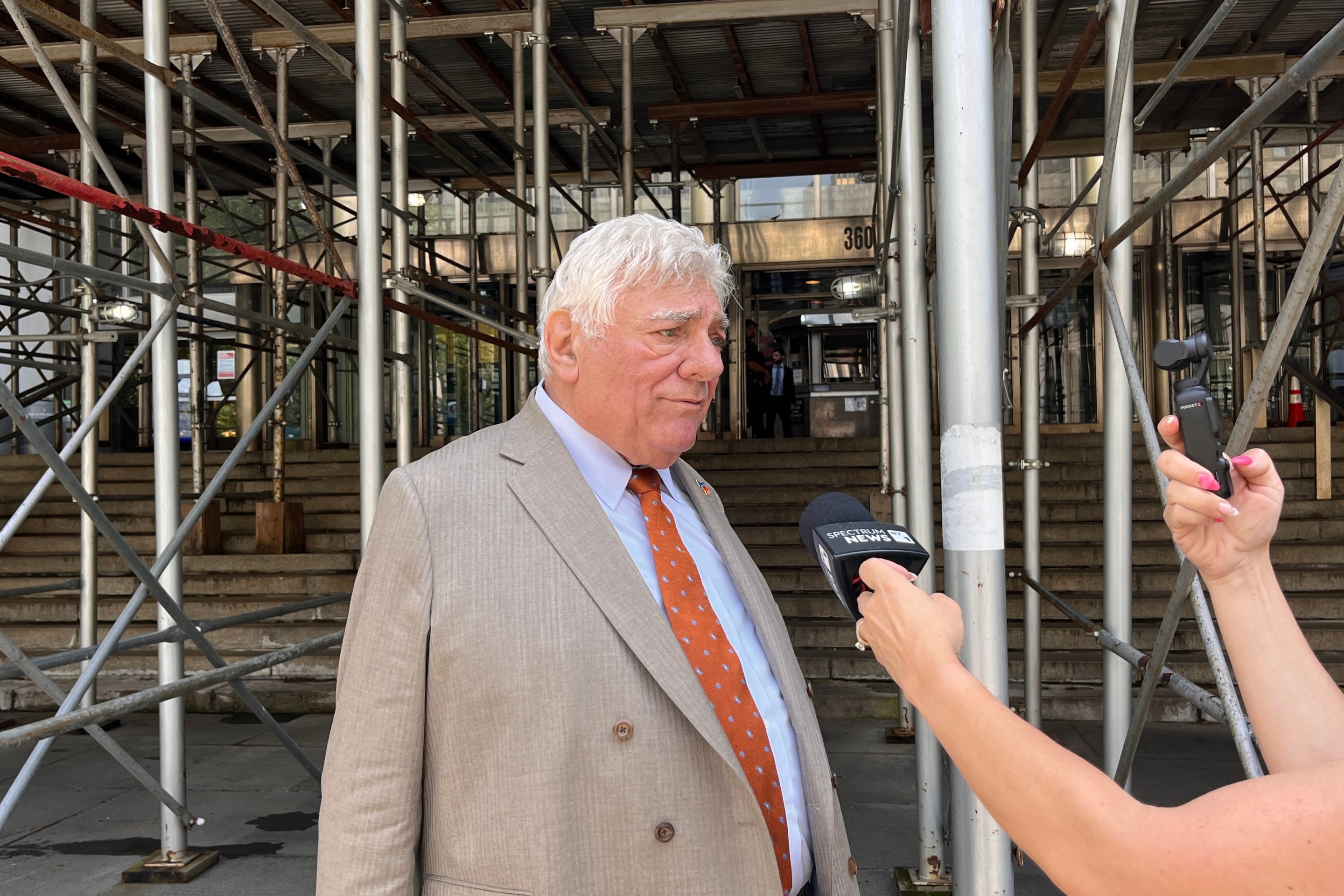Traffic injuries have dropped 35 percent on the 2.5-mile stretch of Queens Boulevard that DOT first redesigned with more dedicated space for walking and biking. Pedestrian injuries have declined even more -- 63 percent.
DOT has been overhauling segments of the Queens Boulevard service roads with protected bike lanes and other safety measures each year since 2015. Last night, at a workshop in Forest Hills for the fourth phase of the project, DOT presented crash reduction stats from the first two phases, between Roosevelt Avenue and Eliot Avenue. (It's too early to have statistically meaningful results from last year's stretch in Rego Park.)
About 100 people turned out to weigh in on the next section of the Queens Boulevard redesign, and overall they were enthusiastic about extending similar safety improvements east through Forest Hills.
Data collected before and after DOT's 2015 and 2016 projects show the redesign has significantly reduced crashes and injuries compared to the three-year average prior to the addition of protected bike lanes and safer merges between the central roadway and the service roads:
The average number of cyclist injuries increased, but the baseline was relatively low and subject to year-to-year fluctuations. Assuming that more people are biking on the safer Queens Boulevard, the risk of injury per mile of cycling has likely been reduced.
This year DOT is planning to redesign Queens Boulevard between Yellowstone Boulevard and Union Turnpike. Last night's public workshop at Queens Borough Hall kicked off the design process.
One of the participants was Rafael de Balanzo, who lives east of Yellowstone and just south of Queens Boulevard. He crosses Queens Boulevard every day, either by foot with his children or on his bike en route to work at Queens College.
But he won't bike on Queens Boulevard itself, and when he needs to get across with his kids, he prefers to do so underground, through a subway station tunnel.
"I don't bike on Queens Boulevard, it's impossible," de Balanzo said. "I don't want to be killed."
Local media attention on the Rego Park section of the redesign has recently focused on the conversion of car parking spots on the service roads to create dedicated space for biking and walking, and the handful of business owners who are upset. Some of those business owners came to the workshop to vent spleens, but overall, participants were focused on improving safety.
People gathered at tables to discuss what's not working on this part of Queens Boulevard and what they envision for the next phase of the redesign, then reported back to the whole group. By and large, they wanted the format of the first three phases to be extended.
Ines Nedelcovic bikes to work in Manhattan via Grand Avenue and the Williamsburg Bridge, but she avoids riding on Queens Boulevard. "I take as many secondary and tertiary roads as I can, because Queens Boulevard intimidates me," she said.
Mark Laster, who sits on the Community Board 6 transportation committee, told Streetsblog he was satisfied with the redesign so far, and that it should be replicated in the fourth phase.
"I don't think you can do pieces of this change," he said. "You've got to do it as a package."







